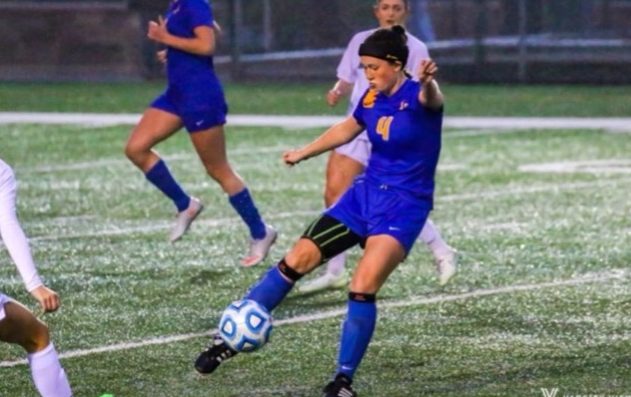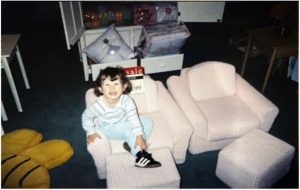
My first pair of shoes was a pair of children’s Adidas Sambas. My dad, an avid soccer fan, gave me this first pair as a baby gift. Soon after, I developed a love for the game.
The rhythm of play, the strategic thinking, and the creative maneuvers gave me a sense of tranquility. On the pitch, I was at ease. Little did I know, part of soccer’s beauty is due to its legal protections. Although I’m now in law school and not on the soccer field, I am happy to share that my love of soccer led me to the vast world of health and intellectual property (IP). Let me run through how I got here.
Gear(ed) Towards IP
As a youth athlete, I was constantly surrounded by the legal protections of IP, even though I didn’t know it then. I wore Adidas Copa Mundials, which is a boot made with kangaroo-leather that affects thickness and coating specifications of the shoe. This design allows for greater control of the ball. Little did I know, Adidas owned a patent that protected my well-worn soccer cleats.
I also wore jerseys that showed the famous Nike “Swoosh” logo, a design trademarked by the company for athletic uniforms. Even the modern-day soccer ball, composed of 20 hexagons and 12 pentagons in a black-and-white formation, was originally patented in the 1960s.
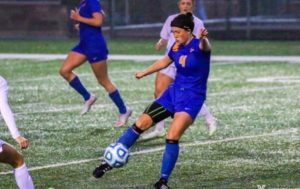
Like all other players, I thought the equipment was there to make me better, not spark intellectual curiosity.
That was until I learned of a soccer headband that reduces the risk of head injuries. After sustaining a concussion on the field, I began to use this piece of wearable health technology. It soon became a second skin, a part of my uniform, physically protecting me through IP. This sparked my interest in the world of athletics and technology. I began my scientific journey that would lead me into health law and IP.
Sitting on the Bench: My First Encounter with IP
Leaving my soccer career behind, I studied kinesiology in college, a field dedicated to the scientific study of human movement. Still unaware of IP law, I completed the pre-medicine track. While my interest in health and science deepened, I questioned my choice to attend medical school. I struggled to find an avenue where innovation and sports performance aligned.
During my senior year of undergrad, I began working in a research lab. Indiana University’s Kinesiology and Physiology labs were renowned for their health discoveries, including the chocolate milk study. With a chance to have a front row seat for new health innovations, I eagerly applied for the position.
Here, I contributed to a study of kidney adaptations under intense, prolonged heat stress. The idea was to mimic southern climates that outdoor laborers experience in the peak of summer.
With the goal of inventing workmen’s boots, the researchers utilized this data to create footwear equipped with technology to cool the body.
While collecting biological data in the lab, I finally encountered IP face-to-face. I was tasked with finding patents in the US Patent and Trademark Office database, in relation to cooling shoe designs for our study. During my search, I came across a patent application for a heat resistant athletic shoe that closely resembled my familiar soccer cleats. My memories of playing soccer came flooding back. The idea of those tiny Sambas drifted across my mind. Could this be the career I was looking for?
Soon, I realized that IP law might balance my curiosities in health and innovation. It connected my medical interest in health and performance-based technologies with my love of reading and research. From my soccer cleats to my concussion headband, I began to see how IP had even shaped my love for soccer. These tools that enabled athletic performance represented scientific creativity backed by legal protection.
With this discovery, I considered attending law school. Fortunately, I had some guidance. I dedicated the two weeks following my college graduation to engage with professors at my University’s law school, asking a myriad of questions about the legal field. While my initial interest in law stemmed from IP, these conversations quickly revealed that my degree was also well suited for health law. Due to my major and pre-medicine background, I received strong encouragement to pursue a legal degree with health law as a focus.
Scoring at Loyola
This realization led me to apply to Loyola’s Beazley Institute of Health Law and Policy. Although health law was at the forefront, I remained patent-bar eligible, and wanted to stay engaged with IP and explore its intersections with my background. This occurred when I toured Loyola and met Professor Cynthia Ho, who helped me see new possibilities for my legal career.
As Director of the IP Program, Professor Ho assured me that at Loyola, I would not have to choose between health law and IP. With the support of faculty and school resources, I could pursue both. Unlike other institutions that treat health law and IP as separate paths, Loyola provided the courses and faculty to support both fields. Additionally, the school offered specialized courses designed specifically for this intersection, such as Global Access to Medicine a Patent Perspective – perfect for a student like me.
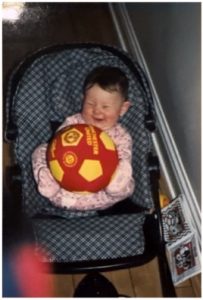
Blending my legal passions reminded me of those little black and white shoes – the first step in a journey to shape my future.
Today, I still wear Sambas (adult-sized). Though Sambas are trendy again, I like to think mine go beyond “looking cool.” I have walked our halls and sat through finals in these beat-up black and white shoes. A symbol of where I have been, the game I love, and a comfort that I have been surrounded by IP all my life. Little did I know this baby gift from my Dad would keep on giving.
I may not know where my IP journey ends, but I know where it began – inspired by my love for the game.
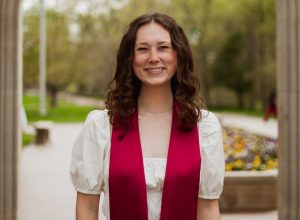
Sophie Michael
Assistant Blogger
Loyola University Chicago School of Law, J.D. 2027
